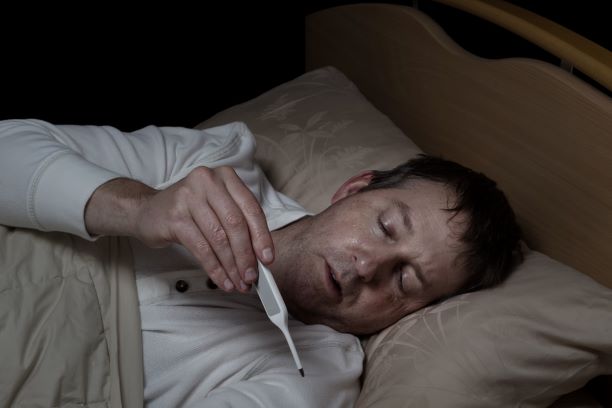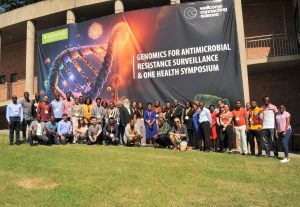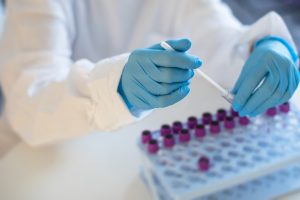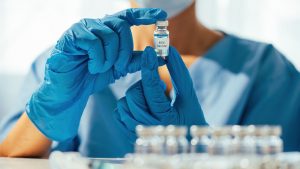What is COVID-19 and how does one get infected?
SARS-CoV-2 is the virus that causes COVID-19 disease. The presence of the virus was unknown to humans until the current pandemic. The time from exposure to development of symptoms for SARS-CoV-2 infection ranges from 2–14 days with an average incubation time of 4-5 days. Several symptoms characterize the disease, including fever, sore throat, and shortness of breath as examples. Respiratory droplets and aerosols transmit the virus through exhalation, such as sneezing, coughing, singing, and talking. The peak concentration of the virus is just before the onset of symptoms.
How long does one stay infectious?
It is unknown for sure the duration of viral shedding and the period of infectiousness for SARS CoV-2. Persons with mild to moderate COVID-19 may shed live virus for up to 10 days following symptom onset. A smaller number of persons with severe COVID-19, including immunocompromised persons, may shed live virus for up to 20 days.
SARS-CoV-2 RNA may be detectable in the upper or lower respiratory tract for weeks after onset of illness. However, the detection of viral RNA does not necessarily mean that infectious virus is present. The body responds by producing antibodies. These antibodies are essential for clearing the infection from the body. The RNA that is detected is likely from remnant or dying cells. Live virus has not been able to be cultured at the low levels of RNA detected. The signs and symptoms of COVID-19 have improved in persons who have repeatedly tested positive for SARS-CoV-2 RNA. Live virus was not isolated in such persons in South Korea and the United States. Also, there is no evidence that persons with persistent or recurrent viral RNA detection have transmitted SARS-CoV-2 to others.
How will we know for sure that reinfection has not occurred?
Over time, collecting serial respiratory samples to isolate live virus in tissue culture from multiple persons testing positive by RT-PCR following recovery is needed. If repeated attempts to recover live viruses in culture are unsuccessful, that would be sufficient evidence that infectious virus is absent. Then we would be sure that persons continuing to test positive do not pose risk of infecting others.
The added approach is to show that the initial infecting virus and second infecting virus are sufficiently different. Molecular sequencing of the whole virus or specific genes of the virus may demonstrate differences. Two cases of reinfection have been reported from Hong Kong and the United States and were confirmed using molecular sequencing. There were sufficient genetic differences between the first and second infections to conclude that the infecting viruses were different. There are no standardized methods to confirm reinfection including excluding laboratory mix-ups and false positive results. Currently, confirmed reinfection appears to be a rare event. With the declines in the numbers of COVID 19 cases time and resources will be become available to focus on such cases.
What is the current guidance if a person retests positive by PCR?
Retesting is unnecessary for persons who remain asymptomatic following recovery from COVID-19 during the first three months after the date of symptom onset. When a positive test occurs less than three months after the person’s symptoms, a positive test could be a new infection or a persistently positive test associated with the previous disease.
Retesting is recommended in persons who develop new symptoms consistent with COVID-19 illness during the first three months since the date of early symptoms. Alternative causes of the symptoms should first be investigated before retesting. If reinfection is suspected, repeat isolation and contact tracing may be needed. Clinicians and public health authorities should consider reinfection if a positive test occurs more than three months after the onset of a person’s symptoms. Until there is more information, knowing whether a person with a positive test in these situations will transmit to others must be made on a case-by-case basis. Potentially infectious persons should undergo evaluation, including retesting, and remain isolated until they again meet the criteria for discontinuation of isolation. Contact tracing during the person’s second period of symptoms is required.
If a person has recovered from COVID-19, is wearing a mask recommended?
All persons, with a few exceptions, should wear a mask in public. The mask’s primary purpose is to limit transmission of SARS-CoV-2 from asymptomatic persons who may be infectious or who may have early or mild symptoms that they do not recognize. Masks may provide reassurance to others in public settings and be a reminder of the need to maintain social distancing.





